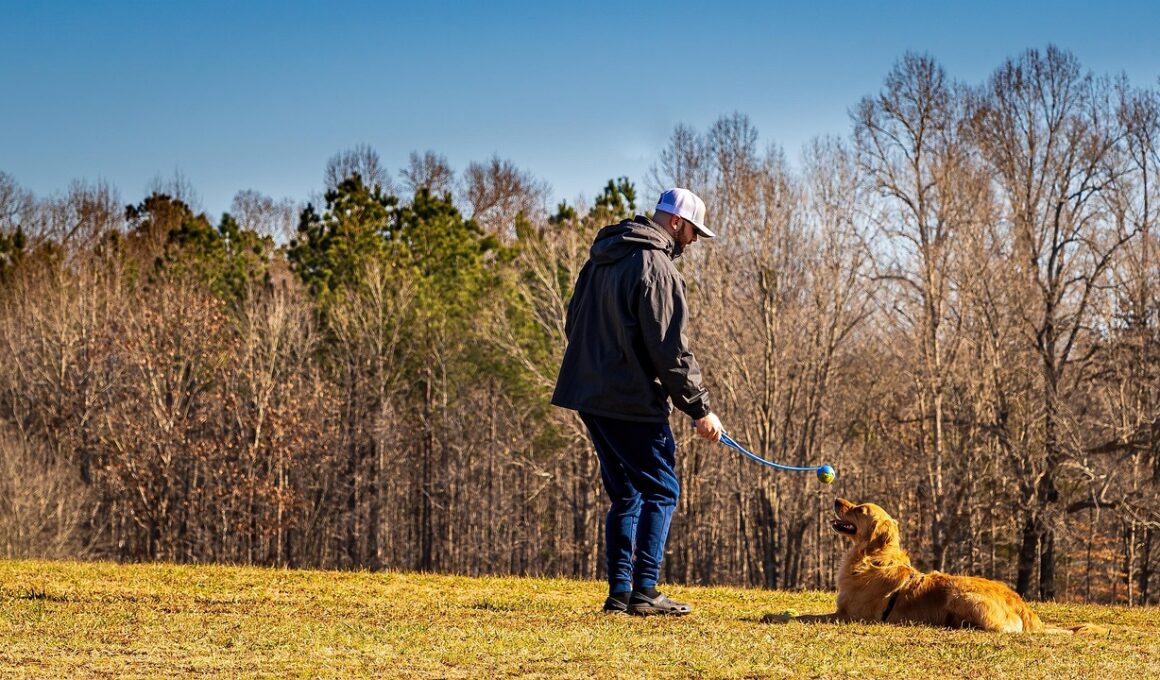Step-by-Step Guide to Teaching Sit and Stay Commands Inside
Teaching your dog the “Sit” command is an essential first step in training. Start in a quiet area free from distractions, ensuring both you and your dog are relaxed. Have some treats on hand to encourage positive reinforcement. Hold a treat in front of your dog’s nose, allowing them to sniff and be curious. Gradually raise the treat above their head, this naturally encourages their bottom to lower to the ground to follow the treat. Once your dog is in the sitting position, say “Sit” clearly and confidently. Immediately reward them with the treat and praise them enthusiastically. This will help your dog associate the command with the action and the reward. Repeat this exercise several times in short sessions, trying to keep each session to about 5-10 minutes to maintain their interest. Consistency is key, so perform the command throughout the day in various settings inside your home. In time, your dog will begin to respond to the command, establishing a strong foundation for more advanced training commands that will follow later.
Once your dog has mastered the “Sit” command, you can progress to teaching the “Stay” command, which helps with impulse control. Begin with your dog in the sitting position, as they’ve already been trained in that. Use a treat to get their attention, then say “Stay” in a firm but calm voice. Take a step back while maintaining eye contact with your dog to ensure they stay in place. If they hold the position, take a moment to return immediately and reward them with the treat and praise. If they break their stay, gently reposition them back to the original position without punishment. The goal is to help them understand that staying put is rewarding. Increase the distance gradually by stepping further away and encourage longer duration stays over time. Make sure each time they succeed, they receive praise and a treat. To reinforce the training, practice in various locations around your home to generalize the command. Consistently practicing the “Stay” command will help your dog stay calm in various situations.
Creating a Positive Training Environment
An environment conducive to learning is crucial when training your dog with commands like “Sit” and “Stay.” Choose a space that is quiet and free of distractions to begin with, allowing your dog to focus completely on your commands. This could be a quiet room in your home or even your backyard, depending on your dog’s comfort level. Keep training sessions short and engaging, ideal for maintaining your dog’s interest and focus. Use high-value treats that your dog enjoys to incentivize learning. Always have a variety of treats available during your training; this keeps them motivated and inspired. Encourage a positive atmosphere by praising your dog frequently and using a calm, encouraging tone. If your dog fails to follow a command, instead of scolding them, go back to previous training steps to build confidence. Always aim for success in each session, making it fun for both you and your dog. Incorporating play and breaks throughout the training will also help maintain a joyful bond throughout the process.
Consistency in your commands is crucial. Ensure that you always use the same words and tones when issuing commands to your dog. This will help them learn more effectively. Stay within the same routine, practicing commands regularly. As your dog improves, introduce distractions gradually, such as friends or family walking by during the training session. This will teach your dog to maintain focus amidst disturbances. It’s essential not to rush through the training. Always ensure your dog fully understands a command before moving on to more advanced commands. Mini training sessions spread throughout the day can be more effective than a long, exhaustive session. Mixing commands such as “Sit,” “Stay,” and even other basic commands can challenge your dog and keep training lively and engaging. By using the principles of positive reinforcement, dogs are more inclined to respond enthusiastically to their commands. Above all, be patient with your dog. Remember that every dog learns at their own pace, and practice makes perfect!
Common Challenges and Solutions
When training your dog with commands like “Sit” and “Stay,” some challenges may arise that can hinder progress. It’s common for dogs to become easily distracted, especially in environments brimming with noises or scents. If distractions are a problem, take it slow and gradually increase the level of challenge by practicing in quieter environments first before transitioning. Observe your dog closely; if they seem overwhelmed or uninterested, it may be time to switch tactics. Keep reward treats handy, as several training sessions can lead to a loss of motivation. If you notice a lack of focus during practice, consider changing up your approach, like introducing a new command or redirecting with a brief game. If your dog consistently breaks the “Stay” command, evaluate whether you’re asking too much too soon. Reassess the distances and time you’re asking for during stays, ensuring it’s within your dog’s limit. Training should always remain a positive experience for your dog to encourage their eagerness to learn.
Another common challenge is to avoid forming bad habits during the training process. This means not rewarding your dog unless they’ve correctly executed the command. If your dog attempts to move or break their position, halt or withdraw the treat momentarily to signify a lack of reward. You should never punish them, as this may cause confusion or fear, which hinders communication. Instead, patiently guide them back into the correct position and offer proper praise when they succeed. Be consistent in this regard to teach your dog that rewards come from correct behavior rather than random acts. Additionally, make sure that all family members abide by the same training rules and protocols when interacting with the dog. This will better reinforce the effectiveness of the training methods. Puppies, in particular, can absorb information quickly if they feel reinforced positively, which includes at home as well as in public. Establishing routines often helps as well, so incorporating commands into their daily life routines boosts their understanding and recall.
Gradually Advancing Training
After successfully teaching your dog the “Sit” and “Stay” commands, consider advancing their training with additional commands. Empowering your dog with various commands will build their confidence and help create a deeper bond between you both. Gradually introduce commands such as “Come,” “Down,” and “Leave It,” ensuring they understand each command thoroughly before progressing. Keep enriching their training experience by practicing in new locations and situations. Utilize high-value rewards to help maintain interest, as this keeps their eagerness to learn alive. Always aim for brief sessions that are enjoyable, varying the pace and types of exercises or games. You can also incorporate agility training as a fun way to mix up the learning experience. The key during this phase is patience and positive reinforcement, as these are aspects that motivate your dog to comply willingly. Celebrate every small victory during training sessions, reinforcing a positive attitude towards the experience. This amazing journey of training will not only yield better-behaved pets but enriched relationships with our furry friends!
Embrace the beauty of continuous training beyond the initial commands. Regular practice will enhance both your and your dog’s skills. This ongoing learning environment creates mental stimulation, which is essential for your dog’s well-being. Explore classes or groups focused on obedience or agility training to enrich the experience, stable their behaviors, and discover new techniques. Building on existing skills with socialization helps your dog adapt to novel environments, making outings more enjoyable. As dogs learn new commands, they become more comfortable with routine situations. Dogs enjoy sharing experiences with you, so including them on fun outings or exploring new areas can help adapt their commands through real-life situations. Always keep training sessions lighthearted and straightforward; incorporate fun elements and playful interactions with your dog. As you advance, your praise energy should escalate dramatically, as dogs feed off your excitement. Remember training is not merely compliance but an enjoyable activity shared between you and your pet. Through continuous training, dogs become well-adjusted companions and motivated learners, which enhances the bond and trust between you both.


